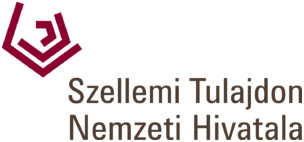Mándi Attila et al. (szerk.): 100 éves a szabadalmi rendszer Magyarországon - MIE közleményei különszám (Budapest, 1996)
16. Innovatív emberi erőforrás
öntvényekből készült nagy terjedelmű berendezéseket az 1 km-re lévő műhelyből télen tudták a gyárba szállítani, amikor leesett a hó, és a gépek alá deszkát erősítettek, úgy vontatták. A hazai édesiparban jelentős változást hozott 1963, amikor a hat működő gyárat, egy budapesti központtal, nagyvállalattá koncentrálták. Abban a szervezetben logikus döntés volt, hogy egy-egy helyen megszüntettek bizonyos profilokat, áthelyezték máshova. Az ily módon letisztult profilú gyárak jelentették a korszerű tömeggyártás alapját. Ennek az iparpolitikai elképzelésnek az alapján 1981-ig a Magyar Édesipar több gyárában hajtottak végre fejlesztéseket, és mert a nagyvállalat pénzügyi forrásai korlátozottak voltak, a legalapvetőbb technikai berendezéseket házilag készítették Győrött. Törvényszerű volt ugyanis, hogy a fejlesztésre fordítható pénzt a több gyárral rendelkező nagyvállalat osztotta el, a Győri Keksz és Ostyagyár a sor végére került, néhány infrastrukturális beruházáson kívül jelentősebb technológiai fejlesztés nem volt. Ebben az időszakban a német dr. Oetker céggel megkötött licenc szerződés jelentett eredményes változást. Átvéve a legkorszerűbb technológiát 1976-tól 4 ízválasztékú főzőpudingot, később különböző porszerű instant terméket (Gála, Aranka pudingok, fagylaltpor) gyártottak. Az Oetker termékek piaci bevezetése látványosan átalakította a fogyasztói szokásokat, a forgalom ebben a termékcsoportban rövid idő alatt a többszörösére növekedett. (Ez a piaci siker is hozzájárult ahhoz, hogy 1992-ben ezt az üzletágat a pudingok gyártásában világhírű dr. Oetker cégnek eladták, és a vállalat tavaly people of the company that had the name of Győri Keksz és Ostyagyár at that time designed and made the different technical devices and machines in the comjiany’s workshops among others half a dozen of wafer irons which they gave the name of special to. The big machines made of special castings could be transported into the factory from the workshop situated at 1 km distance during the winter season only as the only way to transport them was to put them on boards and tow them. The year 1963 brought important changes to the Hungarian sweets industry. It was the time when the six operating businesses were concentrated in one big concern with the headquarters in Budapest. In this organization it was quite a reasonable decision to stop some lines at a factory and transfer them to another. These factories with improved and simplified lines constituted the basis for the modern mass production. Until the year 1981, there were improvements and extensions realized on the basis of this industrial policy in different factories of the Hungarian sweets industry and due to the limited financial resources the most important technical devices and equipment were produced in house at Győr. Quite naturally, the financial resources allocated for technical improvements were distributed by the big company having several factories and Győri Keksz és Ostyagyár was always the last in the row and there were no significant technological improvements apart from some minor investments of infrastructural nature. In this period there was a single successful change: the licence agreement concluded with the company Dr. Oetker. From 1976 pudding powders of 4 different flavours, later on different powdered soluble products (Aranka, Gála pudding powder, ice cream powder) were produced. The introduction of the Dr. Oetker products onto the market changed 145
